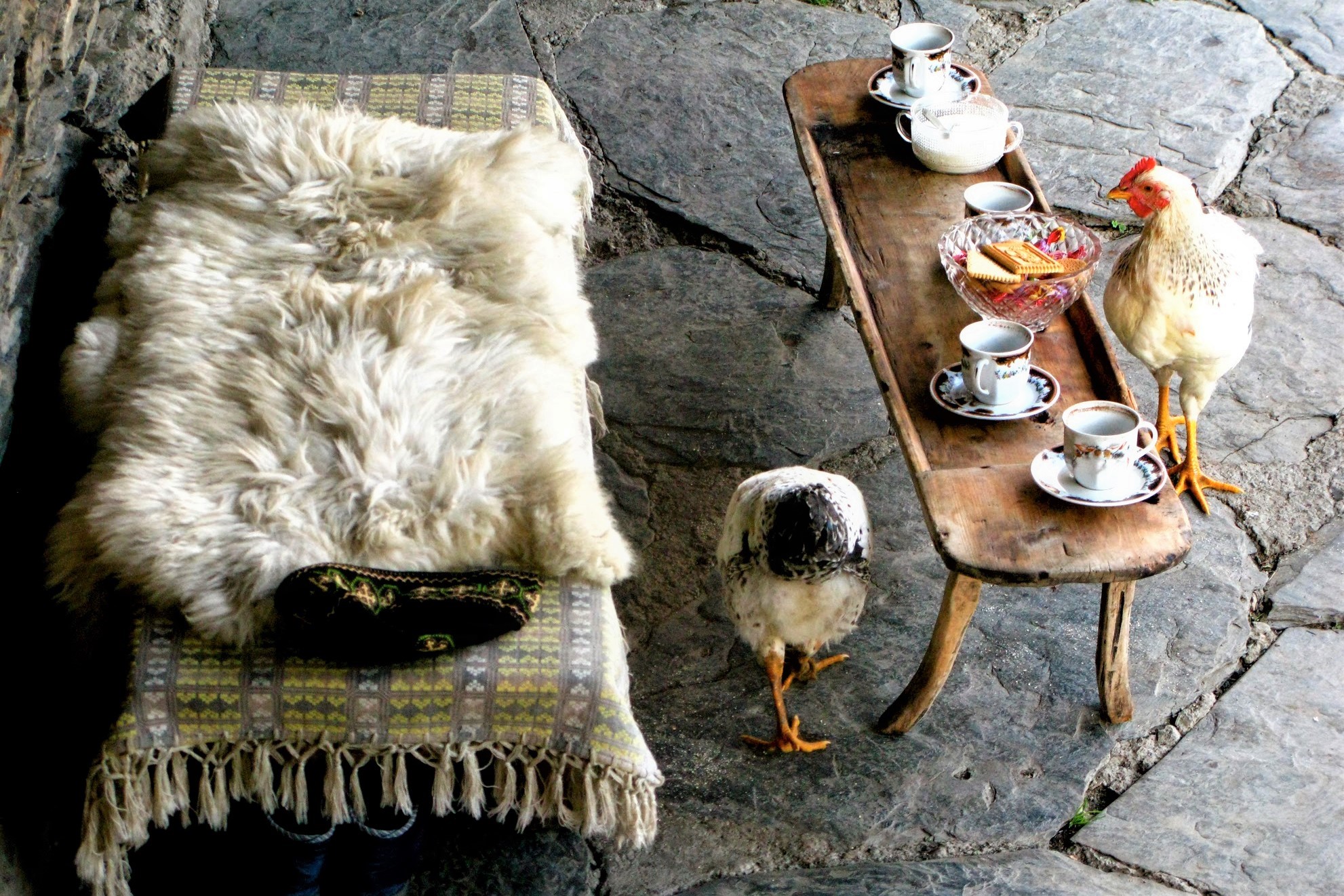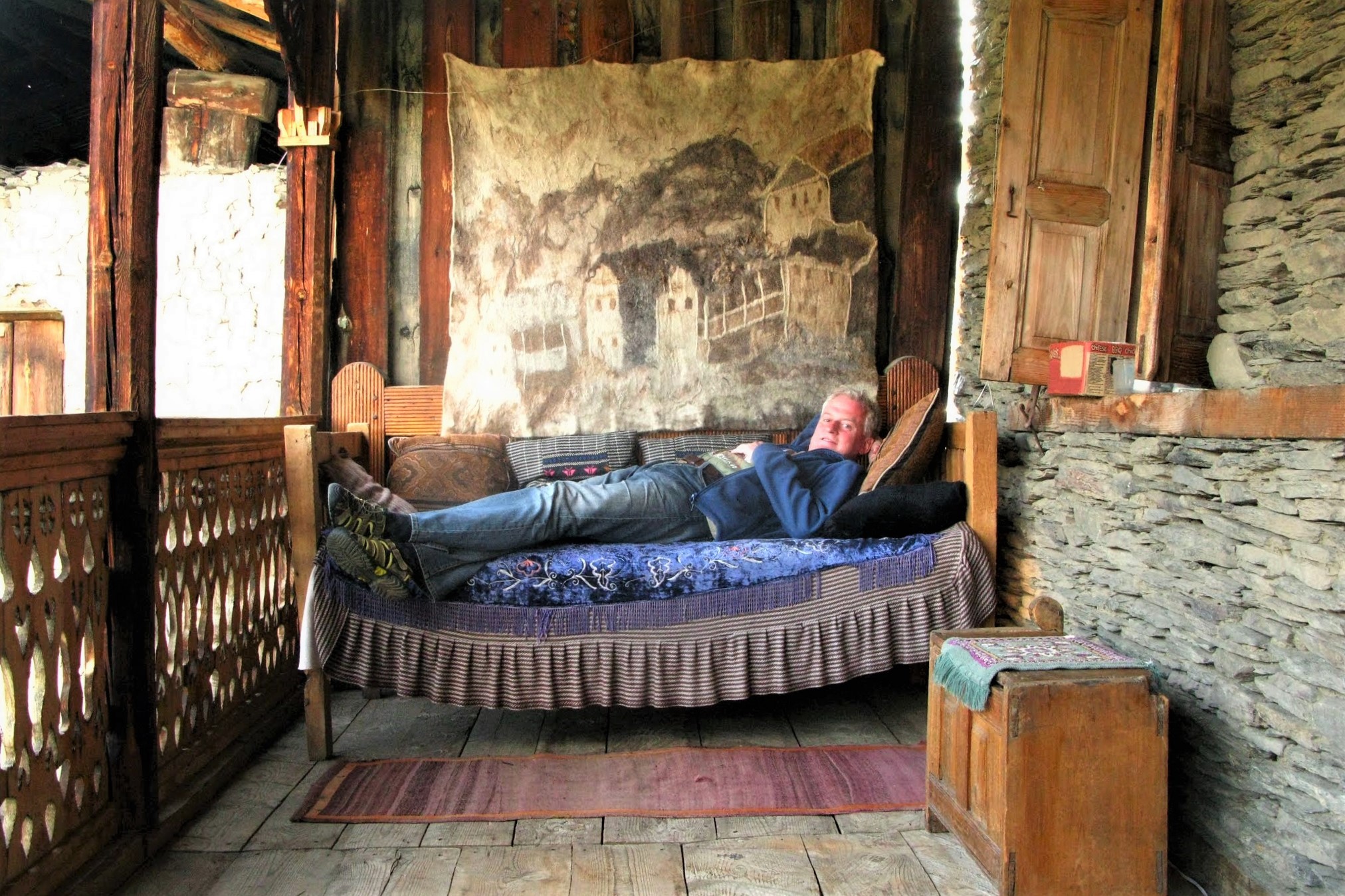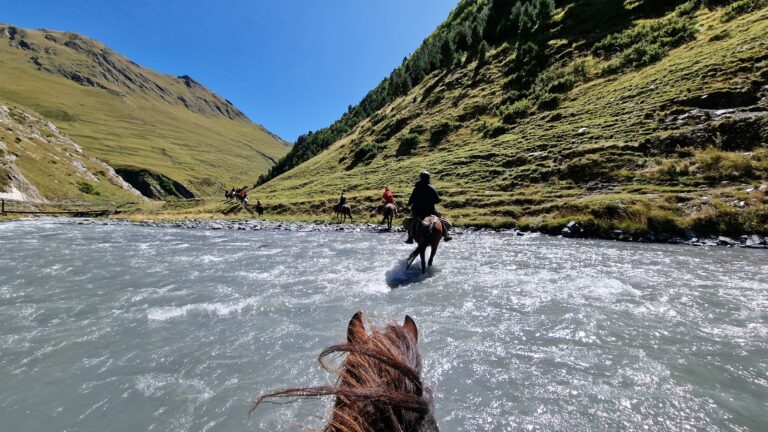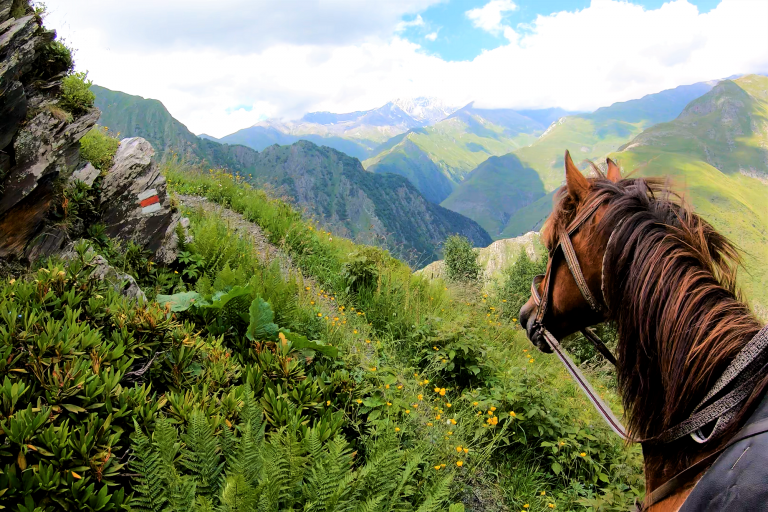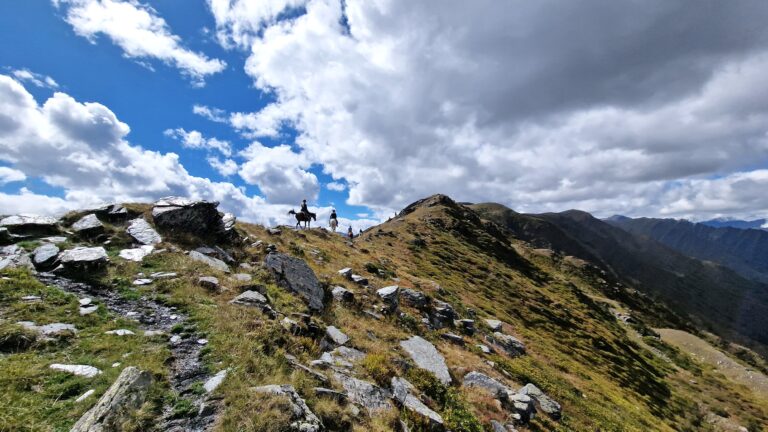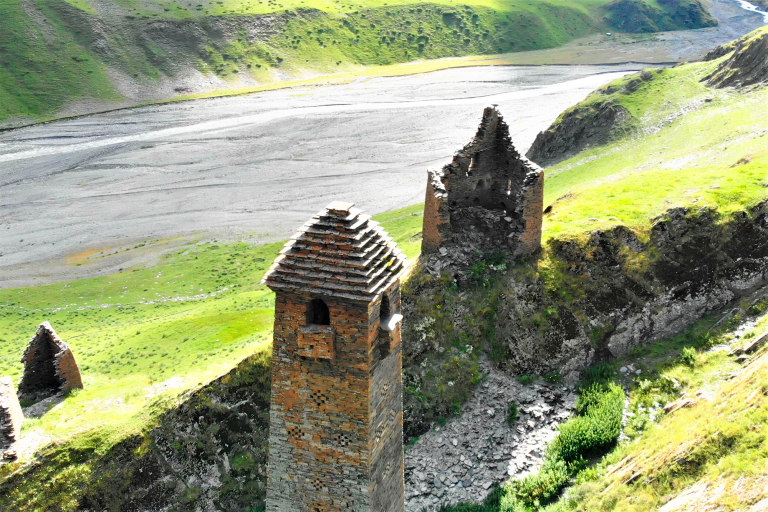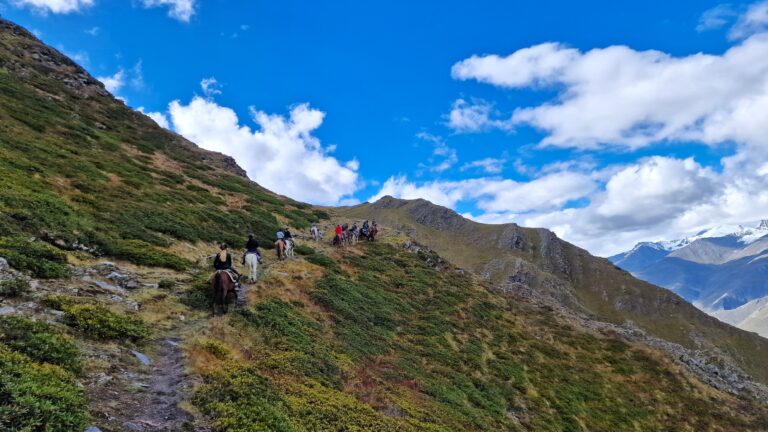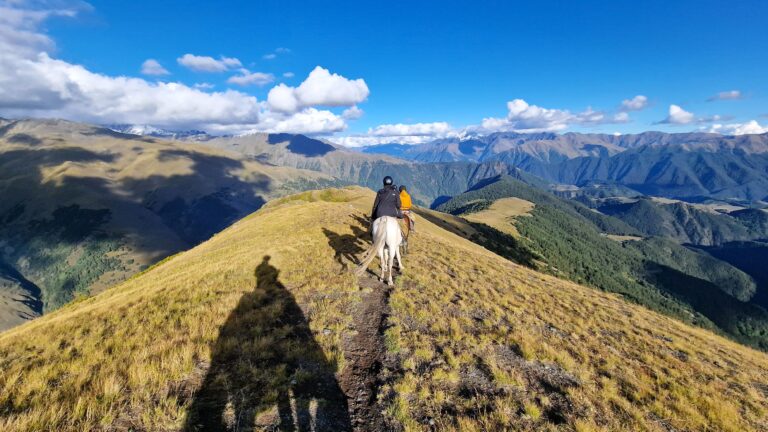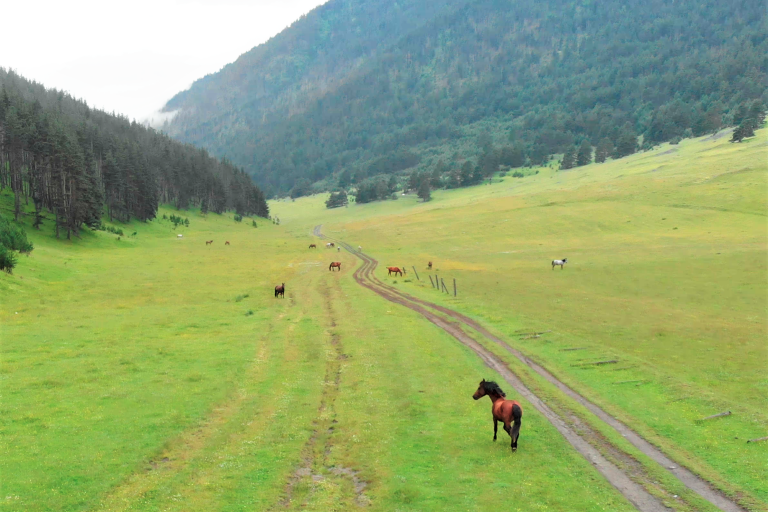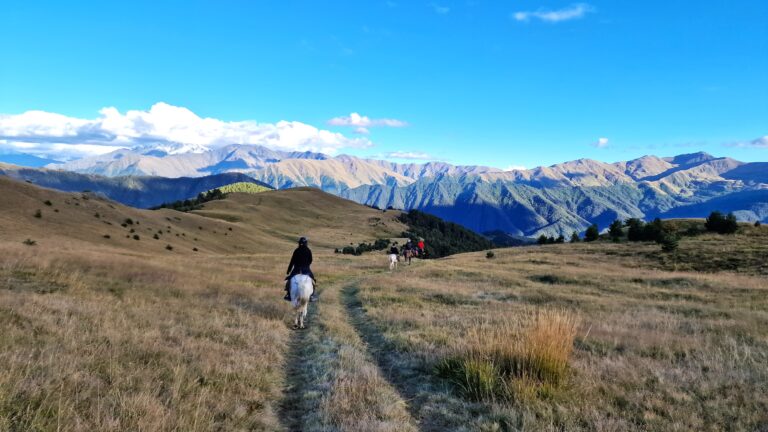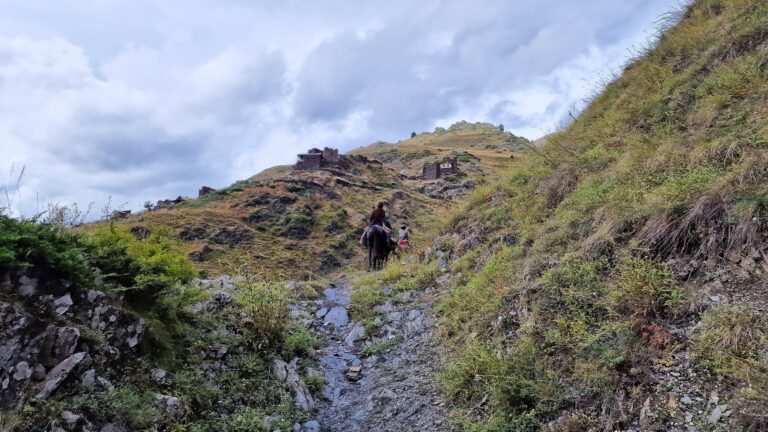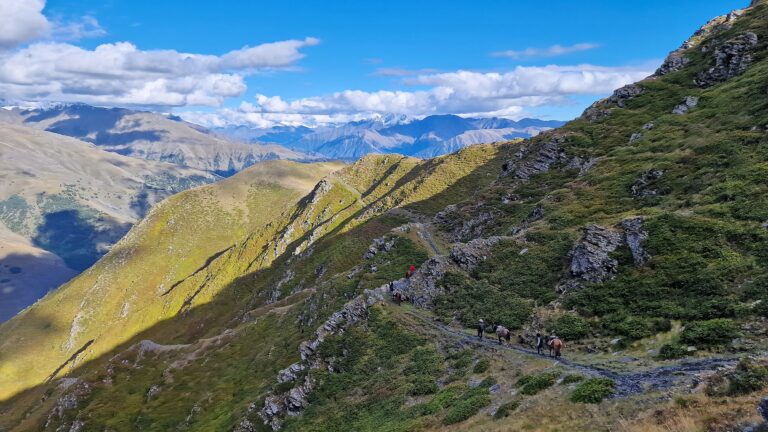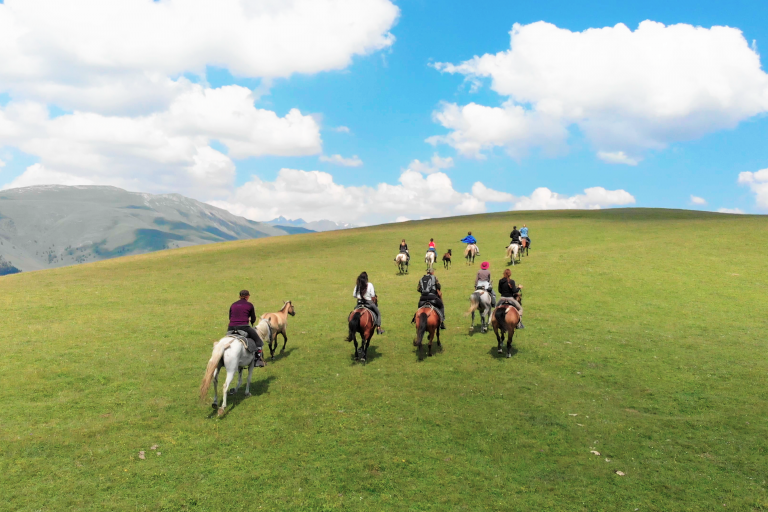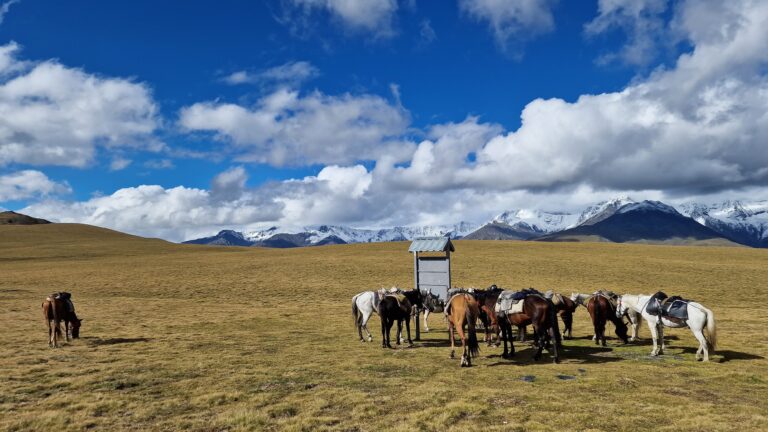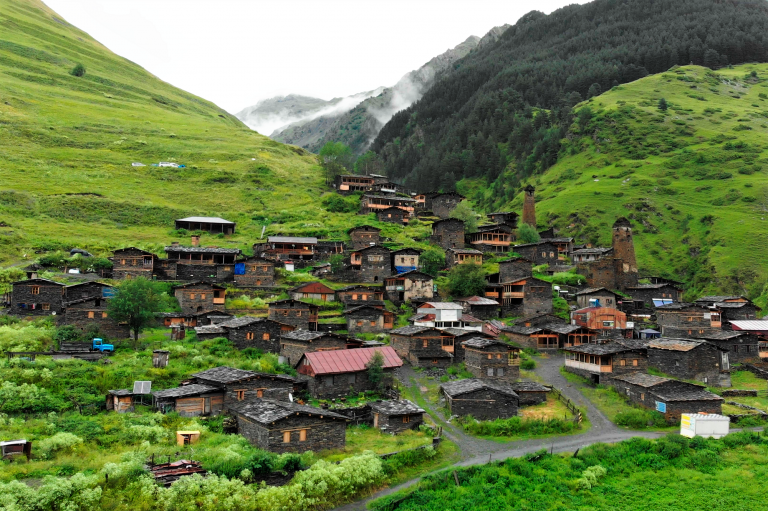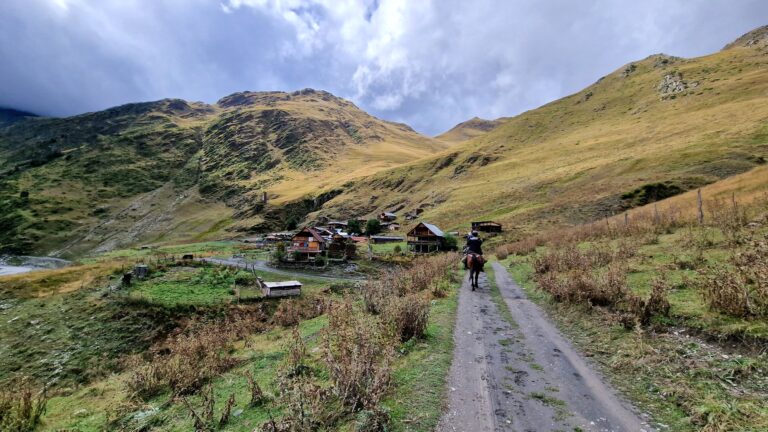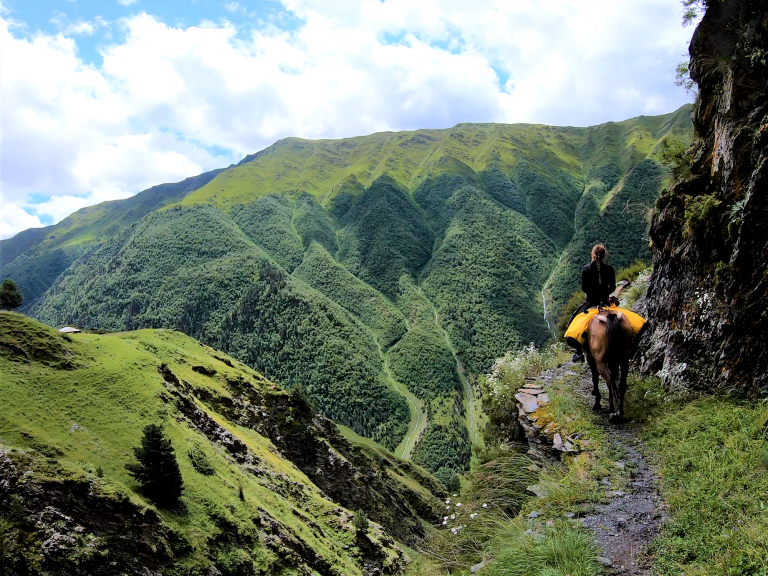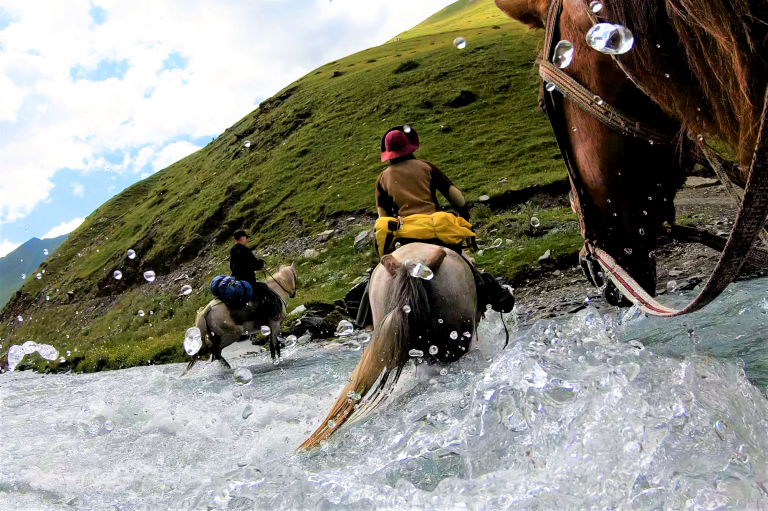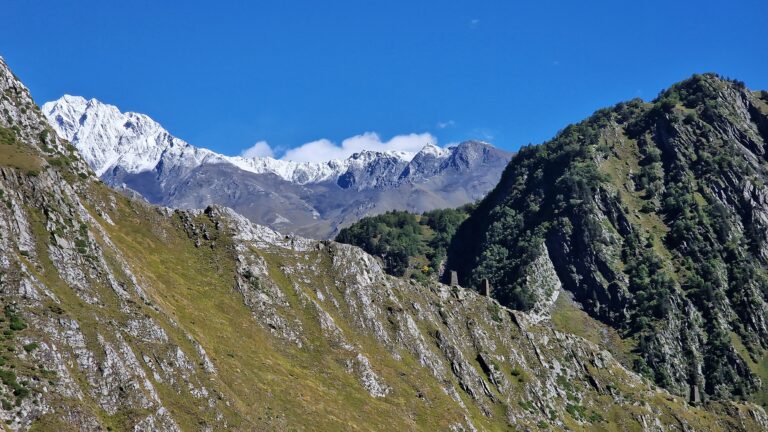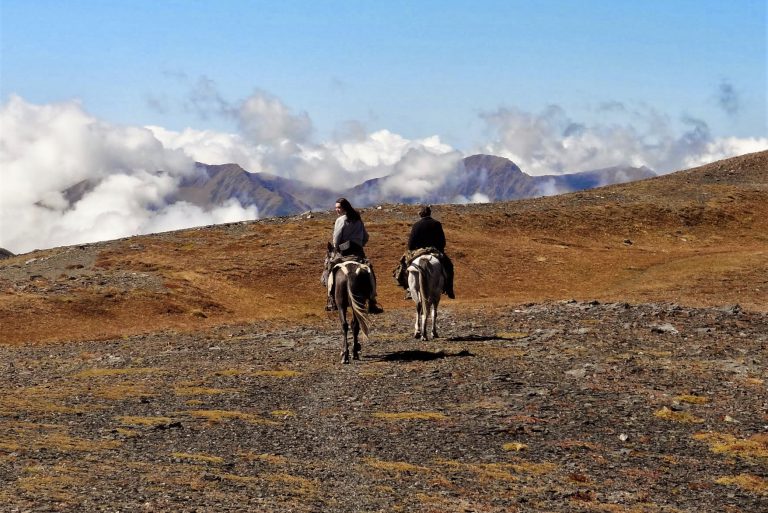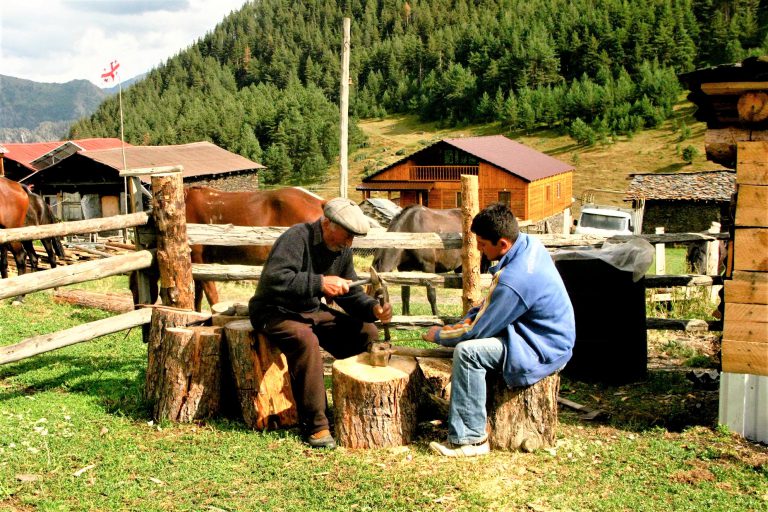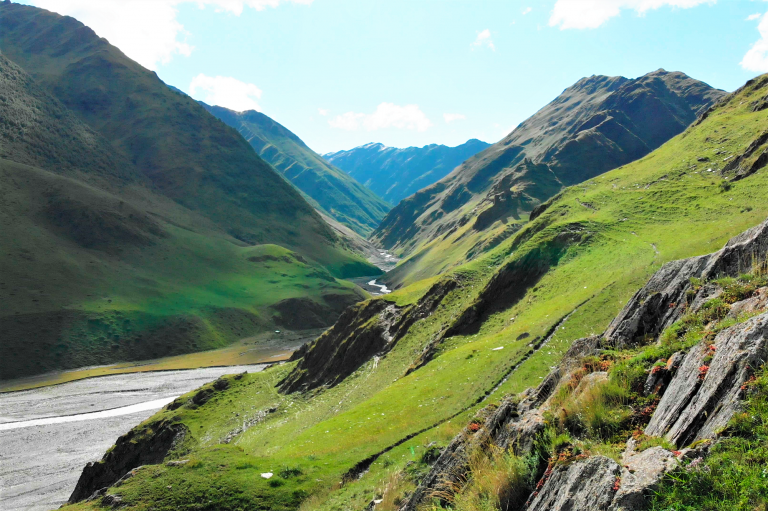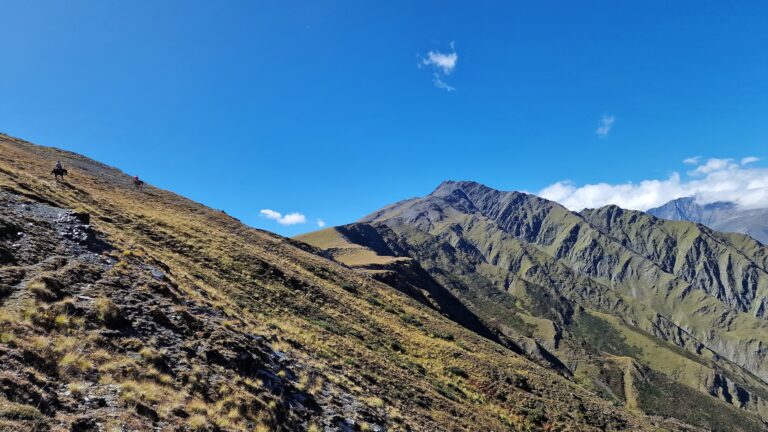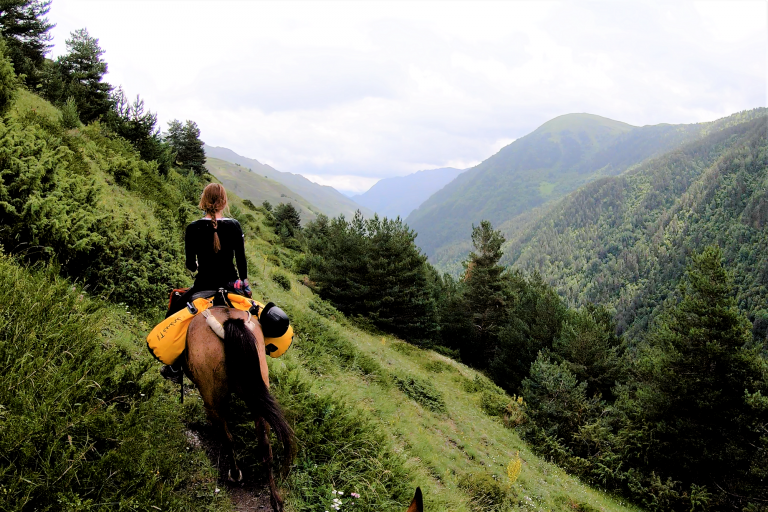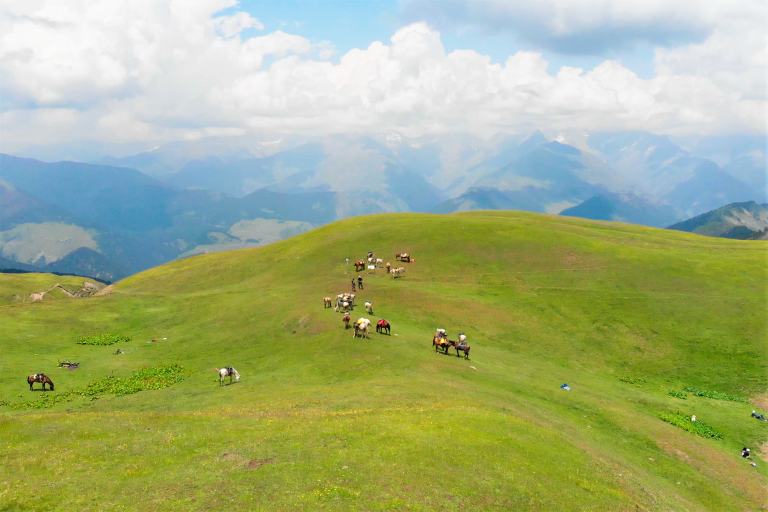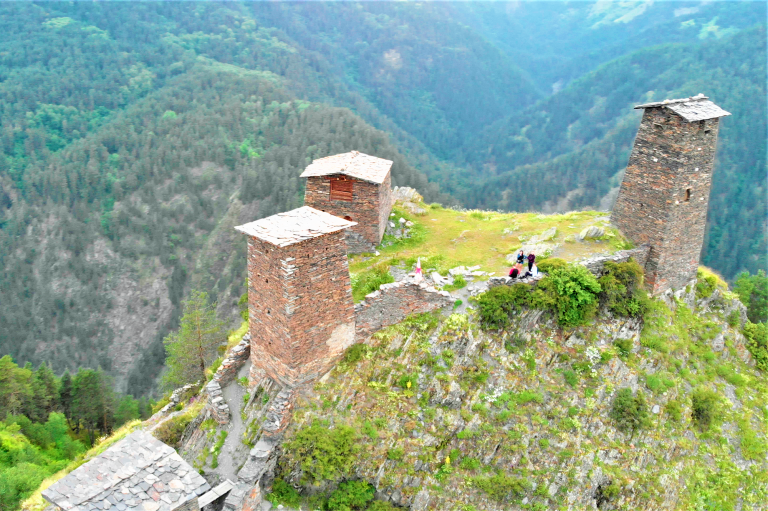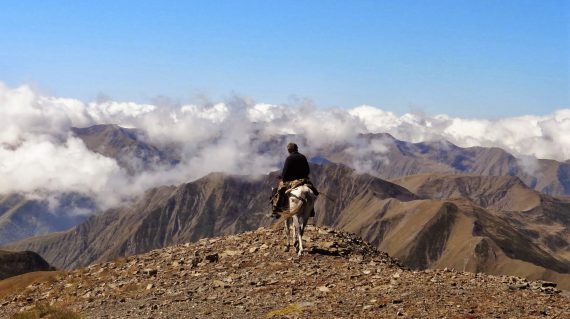
The Greater Caucasus
Georgia
Behold the majestic Caucasus! We are setting out for Tusheti, an amazing, absolutely beautiful, and legendary region of Georgia. The Greater Caucasus is one of our oldest and most important horse trails. This high mountain ride in wild, scarcely populated and stunningly beautiful Tusheti this ride is a real adventure. We will climb steep paths and narrow shepherding trails right to high passes, ride out to mountain meadows, cross shimmering streams and reach small settlements deep in the Caucasus mountains. We will spend evenings and nights hosted by friendly highlander families, have long dinners together, drink chacha and wine, share stories and listen to the nature around us.
-
Days overall10 daysDays in saddle6 days
-
Group size12Available
-
Standardhighlanders' hospitality (under roofs and in beds)Luggageno limit, on horses: 12 kgFoodlocal cuisine, vegetarian available
-
Skillswalk, trot, canter
Our Greater Caucasus trail is quite an expedition through wild, remote, largely uninhabited Tusheti, a high mountain region in North-Eastern Georgia. It’s a unique expedition through wild, remote, largely uninhabited Tusheti, a high mountain region in North-Eastern Georgia. We spend 10 days in Georgia of which 6 days exploring this beautiful region on local Tushetian horses, a relatively small-framed, brave, tough and smart saddle horses that have been with Tushi highlanders since… forever. Their perfect balance, easy temper, endurance and experience makes them great horses for riding in this demanding, high mountain landscape. Hot water, electricity and mobile coverage might not be always available and the region stays largely pristine also being a national park and partially a protected nature reserve. We dash through wild mountains, climb high passes, ride ridges and descend to small settlements deep in the Caucasus mountains.
Tusheti is populated by highlanders, called Tushetians in English, or Tushebi / Tushi as they call themselves. Tusheti is scarcely populated, with less then a thousand people living there from late May to early October. From Spring to Autumn Tushis herd and raise thousands of animals, farm and… welcome guests, which is their favourite thing to do. Tushis, as all Georgians, love hosting guests. In cold months of the year the region empties with a dozen of people staying for Winter while the region is cut off from the rest of the world. The famous road to Tusheti disappears under snow and becomes nearly impassable until it reopens in late Spring.
Our Georgian team consists of highlanders, from both Tusheti and neighbouring regions, some of them nearly literally raised in the saddle. Their knowledge of Tusheti, vast experience in trail riding and famous Georgian hospitality makes them the best people for the adventure ahead and will give you a great insight into Tusheti and into the Georgian culture as a whole.
We spend most nights in relatively comfortable local guesthouses, in beds and linen, usually with hot water and electricity. Hosted by local families we get to see everyday life in Tusheti, taste local food and products and enjoy the simple and beautiful life high in the mountains of this unique region.
Everyday rides take about five hours. Due to the landscape this tour is moderately paced, with long climbs on horses but also great spots for fast canters. In some places, especially while going down steep or slippery slopes on some parts of the trail, riders dismount and lead their horses.
- 2 nights at a hotel in Tbilisi
- 7 nights at guesthouses in Tusheti
- Breakfasts in Tbilisi
- All meals in Tusheti (brakfasts, lunches “to go”, dinners)
- Transfers to and from Tbilisi airport (on first and last days of the tour)
- Transport from Tbilisi to Omalo and back
- Horsemen and guides during the entire ride in Tusheti
- English-speaking pilot during the entire tour
- Horse with full tack and equipment
- Tourist insurance covering high-risk sports
- Flight tickets to and from Georgia
- In Tbilisi: two dinners – on the first and last nights
- Minor personal expenses (souvenirs, additional snacks, admission tickets, etc.)
- Optional: single room supplement (where available)
- Day 1 Welcome to Georgia
- Day 2 Road to Tusheti
- Day 3 On the trail
- Day 4 To the North
- Day 5 Foregone borderland
- Day 6 Greater Caucasus
- Day 7 Road through Tusheti
- Day 8 Reti lake
- Day 9 Back to Tbilisi
- Day 10 Farewell to Georgia

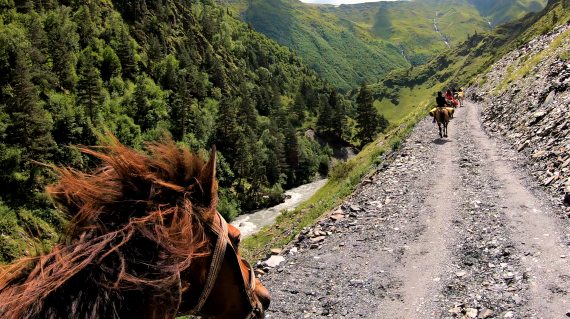
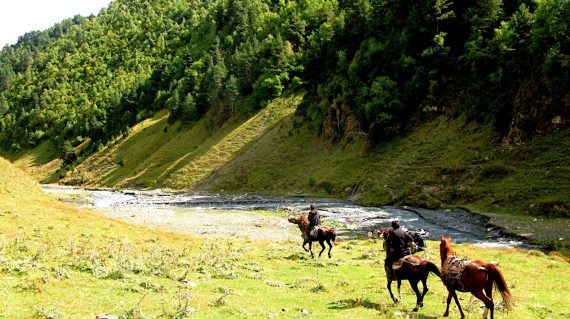
In Tbilisi, the group stays at a European standard family hotel. In Tusheti, however, we stay in guesthouses, hosted by local families. These places are modest but neat. We usually have access to running water, but it might not always be hot. Electricity is usually available. Sleeping bags and mats are not required for the tour – we always sleep under roofs, in beds and in clean bedding.
In Tbilisi, breakfasts are served at the hotel (on the second and the last day). Other meals in Tbilisi (two dinners – on the first and last night) should be purchased individually. During all other days all food is provided. We have breakfasts and dinners at places where we stay for nights. Lunches ride with us and are had during breaks.
Meals in Tusheti are traditional dishes, typical shepherd food: mainly vegetables, mutton and local cheese of various sorts. Drinks – apart from crystal clear water – are herbal infusions, wine, and chacha (local moonshine). In Tbilisi, regular restaurants are common, serving all kinds of dishes.
Equipment
We use typical Caucasian saddles. They are quite different from the English and Western-style saddles and very comfortable for both horses and riders, especially for high mountain riding. Steel saddle bows are set on wooden benches. This construction is covered with a moderately soft “pillow” made of leather. The pillow is kept in its place by a strap, usually made of leather, which serves as a girth part at the same time. Tail docks are common.
Stirrup leathers in Georgia are quite short – Georgians practice a distinctive seat: legs in the front, knees high. Stirrups are quite simple and wide, allowing trekking shoes to fit inside well. Bridles are also simple, made the usual way. We use bits.
Caucasian / Georgian moutain saddles often raise interest, as they are different than classical, English or Western-style ones. Fairly unknown in the West these saddles are very comfortable for long and steep rides. Pommels and cantles are quite high to stabilize riders in mountainous terrain and the pillow seat absorbs bumps very well. This non-standard construction is also quite practical when it comes to attaching larger quantities of luggage.
What you should take with you
The trail in Tusheti leads through mountains partially not accessible by car. This is why we don’t have a transport vehicle assisting us at all times and all luggage for the trail has to be transported on horses. While it’s a good idea to travel to Georgia with a reagular suitcase, riders will need to re-pack for the horse trail. All belongings you won’t need for the trail can stay safely in our guesthouse in Omalo. All your personal stuff for the trail goes on horses, so the overall weight of the trail luggage shouldn’t be more than 12 kg per person. All items should be packed in waterproof, soft bags or sacks that can be strapped to the saddle.
- passport
- cash, USD or EUR
- electronic devices, e.g. camera
- waterproof bag(s) for the trail (sailing or kayak type ones are great)
- a handy backpack or bag (for documents, phone, etc.)
- a canteen or other water containers (it might be an empty plastic bottle)
- flashlight; head flashlights are quite handy
- sunscreen
- head cover against the sun
- trekking shoes, waterproof ones advised
- raincoat / waterproof jacket
- flip-flops for showering
| Date | Trip Status | Price | Spots | |
|---|---|---|---|---|
16 July 2025 - 25 July 2025
|
Full group, English-speaking guide/pilot |
1190 € |
0 |
|
28 August 2025 - 6 September 2025
|
Full group, English-speaking guide/pilot |
1190 € |
0 |
|
23 September 2025 - 2 October 2025
|
Full group, English-speaking guide/pilot |
1190 € |
0 |

